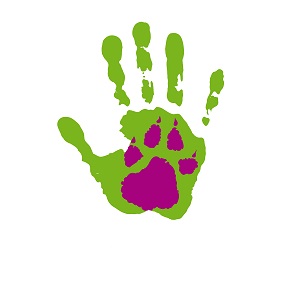Teaching Manners: Stay Quiet At the Door, Stop Jumping Up On People
When a puppy reaches 6 months, and again, 9 months, they have major changes in how they behave. Many people have the ‘perfect puppy until it reaches one of these developmental stages, then ‘all hell breaks loose.’
The problem is that the puppy is now taking all the freedom, play, and excitement you’ve allowed it to have and using it to build survival skills: hunting, fighting, running, foraging, etc..
One of the most overlooked, and potentially most dangerous behaviors is allowing a dog to go crazy at the door. People are hurt when dogs jump on them. Dogs escape and are lost, or worse. It is frustrating for dog trainers because the problem is so easy to fix.
Puppy Training 8 – 20 Weeks
If your puppy is 8-10 weeks then the problem is an easy fix. Go to the door. Open the door. Close the door. And then go do something fun with your puppy.
Pick up the leash. Put it on the puppy. Take it off. And then go do something fun with your puppy.
What you are doing is removing any excitement and expectation associated with the door opening, the leash being picked up, or you are approaching the door.
Puppy Training 20 weeks to 7 months
In this stage we can still train a puppy to stop jumping on you, rushing the door, or becoming over excited when the door opens. This is done by a training method called behavior modification. Do not go to obedience training class. Teaching Rover to sit and stay will not stop them from a ‘learned behavior’ that is reinforced by something good happening.
We want to teach an alternative behavior. So, you will do the same thing as you did with the younger puppies. However, you will reward with treats when the dog is calm and waiting patiently. You may need to start far away from the door, even in the other room.
We need the reinforcement for the behavior we want because the puppy has had its inappropriate behavior reinforced since it moved in with you. It will not understand what you are doing. Why are you no longer allowing it to be crazy when the door opens, or it sees the leash? It doesn’t understand.
The alternative behavior may be sitting on a matt, or returning to its crate. Do not ask it to lay down at the door. This will backfire in a few months.
Puppy Training 7 – 12 months
A puppy that has been allowed to practice inappropriate behaviors until this age will need more drastic measures. The ‘emotional response’ it experiences when the door opens, or the leash is picked up, is ingrained in its behavior. It is permanent.
What your puppy needs now is impulse control. We need to teach the puppy to control its emotions.
1. Do not reinforce when the puppy jumps up. Do not pay attention. Ignore the puppy. Yelling, punishing, and trying to teach the puppy will not work. The dog has developed a ‘visceral response’ to the sound of the door opening. This must be controlled.
2. Open the door and close it several times through the day. Ring the doorbell several times through the day. Knock on the door several times through the day. Each time you do just walk away. Ignore the dog for the first week. After you’ve done these about 30 – 50 times then start acting surprised when the dog runs to the door.
3. If the dog jumps on you then ignore it. Or better still, put up a baby gate so that the dog cannot reach you. Do not pay any attention to the dog until it stops acting excited. Teach the dog that you have no interest in it unless it is quiet.
4. If the dog is in a crate then wait 5 – 10 minutes before greeting the dog. Only greet the dog if it is quiet. If the dog starts acting crazy when you approach the kennel then turn and walk away. In fact, I teach my dogs to lay down quietly. I will open the door, and then walk away. The dog learns to wait quietly until I release it. I usually say ‘okay, outside you go.’ The dog comes and gives me a quick, polite greeting, and then goes outside.
5. Do at least 2 – 3 impulse control, or self-control exercises a day. It is better to do 5 – 10 sessions, 1-2 minutes each, then to do one long session.
Training Earlier is Better
- The schedule for changing puppy’s behavior is as follows:
- 8-10 weeks: a behavior can be shaped in a few sessions
- 10 – 20 weeks: a behavior can be shaped in a few days
- 6 – 9 months: A behavior can be changed in a month or two
- 9+ months: A behavior can be changed in 2-4 months
- 15+ months: A behavior can be changed in a 4 – 6 months
- 3 years plus: A behavior can change in a year
This shows you how important it is to build good behaviors from day one. The longer you wait, the harder it will be to change your dog’s reactions to exciting things, and stop unwanted behaviors.
